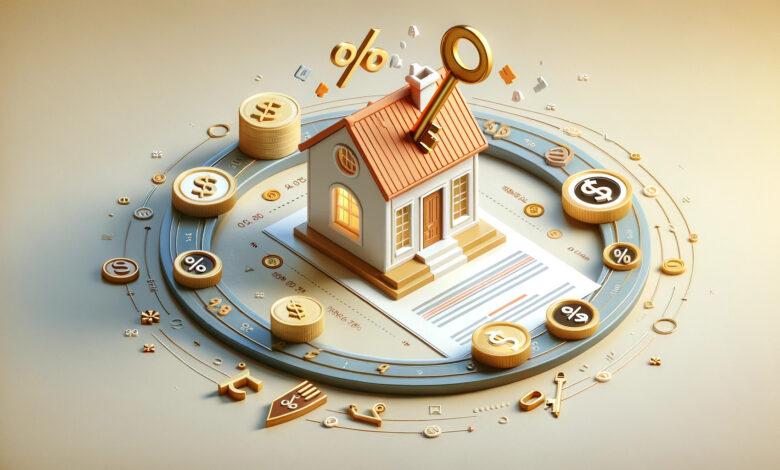How to Calculate a Reverse Mortgage Amount

Are you considering a reverse mortgage? Understanding how to calculate the reverse mortgage amount is crucial to make informed decisions about this financial option. In this article, we will guide you through the process of determining the reverse mortgage amount, considering various factors that influence it. Let’s dive in!
Understanding the Factors
To calculate a reverse mortgage amount accurately, it’s important to be aware of the key factors that come into play:
Age of the Borrower
The borrower’s age is a significant determinant in calculating the reverse mortgage amount. Generally, the older the borrower, the higher the loan amount they may be eligible for. This is because reverse mortgages are primarily designed to provide financial support to seniors during their retirement years.
Property Value
The value of your property is another crucial factor. The more valuable your property, the more funds you may be able to access through a reverse mortgage. Lenders typically use the appraised value of the property to determine the loan amount.
Interest Rates
Interest rates can impact the reverse mortgage amount. Lower interest rates mean you can potentially borrow a higher amount, while higher interest rates may limit the available funds. It’s important to stay updated on current interest rates to assess their impact on your reverse mortgage calculation.
Loan Limits
Reverse mortgages are subject to loan limits set by the government. These limits vary based on factors such as the borrower’s age, the property’s location, and property type. It’s important to be aware of these limits as they can affect the maximum loan amount you can receive.
Step-by-Step Guide to Calculate Reverse Mortgage Amount
Now that we understand the factors involved, let’s walk through the step-by-step process of calculating a reverse mortgage amount:
Step 1: Determine the Borrower’s Age
Start by determining the age of the borrower(s). As mentioned earlier, the borrower’s age plays a significant role in calculating the reverse mortgage amount. The older the borrower, the higher the potential loan amount.
Step 2: Evaluate the Property Value
Obtain an accurate appraisal of your property’s value. This can be done through a professional appraisal or by researching comparable properties in your area. The property value serves as a crucial component in determining the reverse mortgage amount.
Step 3: Consider Interest Rates
Stay informed about current interest rates. Lower rates can increase the loan amount available to you, while higher rates may reduce it. Consult with lenders or financial advisors to understand how interest rates impact your reverse mortgage calculation.
Step 4: Account for Loan Limits
Be mindful of the loan limits set by the government. These limits vary based on factors such as your age, location, and property type. Ensure your reverse mortgage amount aligns with these limits to avoid any complications.
Step 5: Use a Reverse Mortgage Calculator
Utilize online reverse mortgage calculators to simplify the calculation process. These tools consider various factors, such as age, property value, and interest rates, to provide an estimate of the reverse mortgage amount you may be eligible for. While these calculators are helpful, it’s advisable to consult with a professional for accurate information.
Step 6: Calculate the Maximum Reverse Mortgage Amount
Based on the information gathered from the previous steps, you should now have an estimate of the maximum reverse mortgage amount you may qualify for. Remember, this is just an estimate, and consulting with a reverse mortgage specialist or financial advisor is essential for accurate calculations.
Frequently Asked Questions (FAQ)
Let’s address some common questions related to reverse mortgages:
What is a Reverse Mortgage?
A reverse mortgage is a type of home loan available to homeowners aged 62 or older. It allows them to convert a portion of their home equity into cash without having to sell the property or make monthly mortgage payments. The loan is repaid when the borrower(s) no longer occupy the home.
Who is Eligible for a Reverse Mortgage?
To be eligible for a reverse mortgage, you must be a homeowner aged 62 or older. The property must be your primary residence, and you should have sufficient equity in the home.
Can I Get a Reverse Mortgage on a Second Home?
No, reverse mortgages are only available for primary residences. You cannot obtain a reverse mortgage on a second home or investment property.
Will My Heirs Have to Repay the Reverse Mortgage?
Once the borrower(s) no longer occupy the home, the reverse mortgage becomes due. Typically, the heirs have the option to repay the loan balance and keep the property or sell the property to repay the loan. If the loan balance exceeds the property value, the heirs are not responsible for the excess amount.
What Happens if the Reverse Mortgage Amount Exceeds the Property Value?
If the reverse mortgage amount exceeds the property value, the Federal Housing Administration (FHA) insurance covers the difference. This ensures that neither the borrower nor their heirs are responsible for the shortfall.
Are Reverse Mortgage Amounts Taxable?
Reverse mortgage funds are typically considered loan proceeds and, therefore, are not taxable. However, it’s always advisable to consult with a tax professional to understand the specific implications for your situation.
Tips and Considerations
When calculating the reverse mortgage amount, consider the following tips and additional factors:
- Seek advice from a financial advisor or reverse mortgage specialist who can provide personalized guidance based on your unique circumstances.
- Understand the long-term implications and potential risks associated with reverse mortgages.
- Conduct thorough research and compare offers from different lenders to ensure you get the best terms and conditions.
Conclusion
In conclusion, calculating a reverse mortgage amount is crucial when considering this financial option. By understanding the factors involved, following the step-by-step guide, and seeking professional advice, you can make informed decisions about your reverse mortgage. Remember to consider your age, property value, interest rates, and loan limits to estimate the maximum reverse mortgage amount you may be eligible for. With proper research and guidance, a reverse mortgage can provide financial stability during your retirement years.

